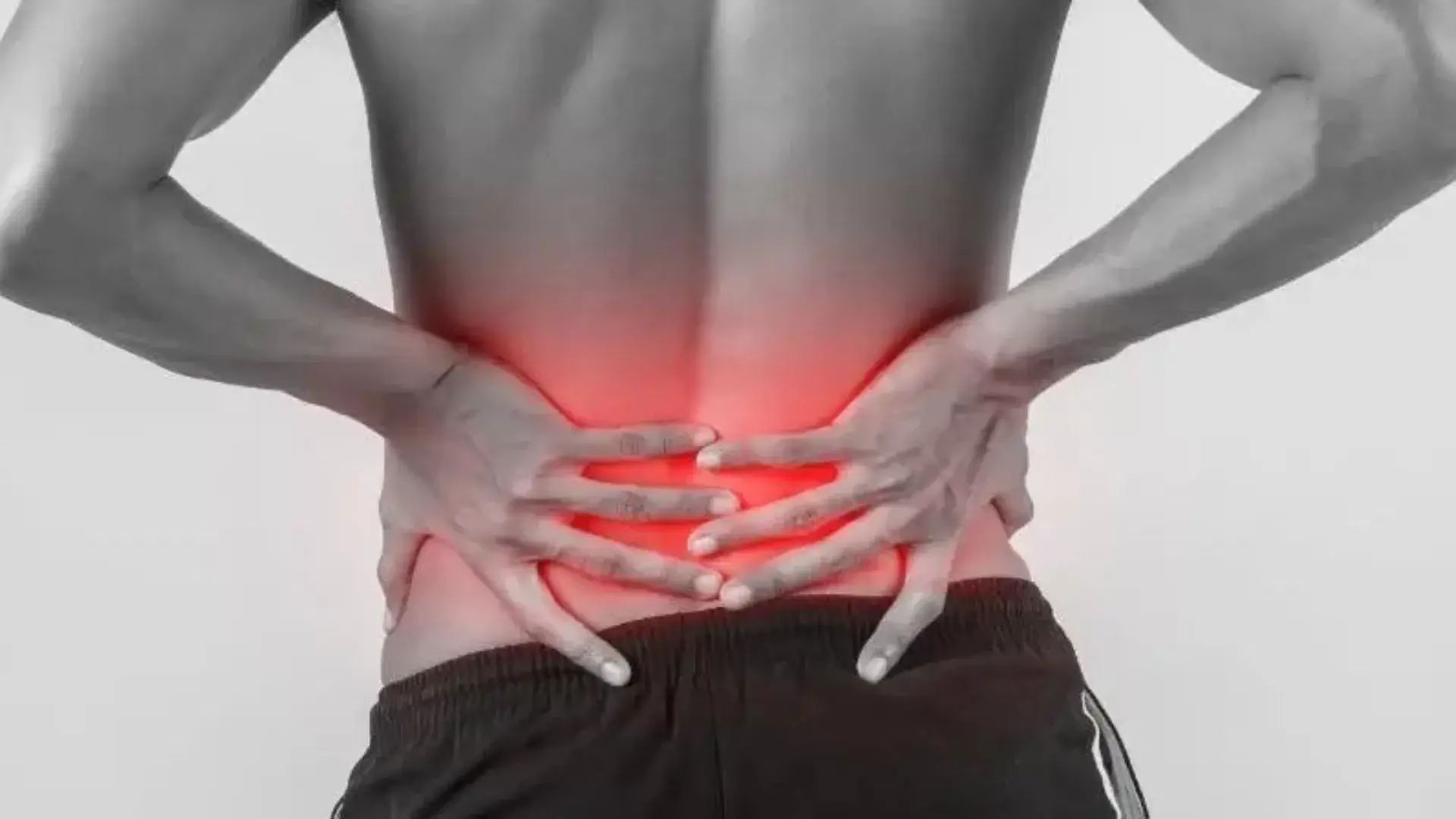In Mississauga, we recognize that tailbone pain, or coccydynia, can greatly impact daily life. Many of us may not realize that seeing a Chiropractor for Tailbone Pain offers effective treatments tailored to address both the discomfort and its underlying causes. By utilizing a combination of spinal alignment, manual therapy, and targeted exercises, these professionals aim to provide relief and empower us with the knowledge to manage our health. However, what exactly should we consider when seeking chiropractic care for this specific issue? Let’s explore the essential factors that could guide us toward effective treatment options.

At Mississauga Physio Chiro Clinic, we offer a thorough range of physiotherapy and chiropractic services tailored to effectively address and alleviate tailbone pain. We recognize how debilitating tailbone discomfort can be, whether it arises from a tailbone injury, prolonged sitting, or poor posture. Our team is dedicated to providing compassionate care and evidence-based treatments designed specifically for tailbone pain relief.
Through chiropractic care for tailbone pain, we focus on spinal alignment and posture correction to reduce pressure on the coccyx. Our physiotherapy and chiropractic services in Mississauga also include extensive tailbone pain treatment plans that may involve manual therapy, targeted tailbone pain exercises, and personalized rehabilitation strategies to promote healing and strength.
We emphasize the importance of addressing not just the symptoms but also the underlying causes of tailbone pain. Our goal is to empower you with the knowledge and tools needed for recovery, ensuring you feel supported every step of the way. With our expertise in tailbone rehabilitation, we can help you regain mobility and improve your quality of life. We’re here to guide you on your journey toward lasting tailbone pain relief.
Chiropractic care plays an essential role in understanding and treating tailbone injuries, helping us address both the pain and its root causes effectively. Many of us experience coccyx pain, often referred to as coccydynia, which can lead to significant tailbone tenderness and inflammation. By utilizing targeted chiropractic techniques, we can alleviate discomfort associated with tailbone injuries and improve overall mobility.
Our approach often includes a detailed assessment of the sacrococcygeal area, allowing us to identify specific issues contributing to tailbone pain from injury. We might also recommend a tailbone support cushion to provide relief while sitting, making daily activities more manageable. Additionally, we promote integrating physical therapy for tailbone pain as part of a thorough treatment plan, which can enhance recovery and strengthen surrounding muscles.
In some cases, we may suggest more advanced interventions, such as a tailbone nerve block, when conservative methods don’t yield satisfactory results. By combining these strategies, we aim to not only relieve pain but also empower our patients to regain their quality of life. Through understanding and addressing the complexities of tailbone injuries, we can foster healing and resilience.
Identifying the primary causes of tailbone pain and injuries is essential for developing effective treatment strategies, as various factors can contribute to discomfort in this sensitive area. One common issue is coccygeal pain, often resulting from a tailbone injury or trauma. This can manifest as a bruised tailbone or, in more severe cases, a tailbone fracture, leading to tailbone swelling and discomfort.
Prolonged sitting can exacerbate tailbone pain, especially for those who spend long hours in a seated position. We must also consider conditions like sacrococcygeal joint dysfunction, which can contribute to chronic tailbone pain and pelvic pain, making daily activities challenging.
Injuries sustained during falls or accidents can lead to significant tailbone trauma, requiring careful evaluation and treatment. Additionally, repetitive strain from certain activities can further aggravate the area. By recognizing these primary causes, we can better address the underlying issues related to tailbone pain. Understanding these factors helps guide our approach in providing relief and restoring function for those suffering from discomfort in the coccygeal region.
Recognizing the symptoms of tailbone damage is essential for determining the appropriate course of treatment and alleviating discomfort experienced by those affected. Common signs of a coccyx injury include sharp or aching pain in the lower back, particularly when sitting or rising from a seated position. We may notice increased tailbone soreness or sensitivity, which can feel particularly pronounced during prolonged periods of sitting or when pressure is applied to the area.
In cases of a fractured or broken tailbone, we might experience intense pain that can radiate to the sacral region, often referred to as sacral pain. Tailbone pain from pregnancy can also arise, with hormonal changes leading to increased sensitivity and discomfort. Additionally, tailbone muscle strain can contribute to ongoing pain, making it important to identify and address these underlying issues.
If we experience persistent pain when sitting, or if tailbone pressure exacerbates our discomfort, it’s essential to seek professional help. By recognizing these symptoms early, we can take the necessary steps toward appropriate treatment and regain comfort in our daily activities.

When we suspect a tailbone injury, a detailed evaluation by a chiropractor is essential for accurately diagnosing the issue and developing an effective treatment plan. During our chiropractic evaluation, we assess for signs of coccyx dysfunction, sacral misalignment, and any related lower back pain. Understanding the specific cause of your tailbone pain helps us tailor our approach.
To gain a thorough understanding of your condition, we may recommend imaging studies, if necessary. This can help identify any structural issues that contribute to tailbone pain, especially for those experiencing discomfort from cycling or prolonged sitting.
Once we’ve established the diagnosis, we often incorporate targeted tailbone pain stretches and tailbone mobility exercises into your treatment plan. These exercises can enhance flexibility and alleviate discomfort. Additionally, we may discuss ergonomic seating for tailbone pain to improve your daily comfort.
In some cases, if conservative treatments aren’t effective, we might consider options like tailbone injection therapy to provide relief. Our goal is to support you in managing your symptoms and restoring function, ensuring you can return to your daily activities without pain.
To effectively realign the tailbone and alleviate pain, we utilize specific chiropractic adjustment techniques tailored to the individual needs of our patients. Many of us experience tailbone pain due to tailbone misalignment, often exacerbated by poor posture and pelvic misalignment. In our practice, we focus on the coccygeal region, where we apply gentle adjustments to correct any misalignment that may be contributing to discomfort.
For those suffering from acute tailbone pain or a dislocated coccyx, our techniques aim to restore proper alignment and function. We also emphasize the importance of tailbone strengthening exercises, which can help support the area and reduce the risk of future issues. Additionally, we address tailbone nerve pain by identifying and alleviating any underlying causes.
Building on our focus on realigning the tailbone, hands-on chiropractic therapies play a significant role in providing immediate relief from tailbone pain while promoting long-term healing. Through specialized techniques, we can address various underlying issues like tailbone bruising, sacral joint pain, and even pudendal nerve pain, which can be debilitating.
For those experiencing tailbone ligament injury or tailbone arthritis, our hands-on approach is particularly effective. We utilize targeted manipulation to alleviate discomfort associated with degenerative joint disease in the tailbone, fostering better mobility and reducing inflammation. Additionally, for postpartum tailbone pain, our therapies can help new mothers regain comfort and functionality.
Incorporating adjunctive treatments like acupuncture for tailbone pain can further enhance recovery, providing a holistic approach to healing. We recognize that some individuals may even consider tailbone surgery as a last resort; however, our goal is to explore all non-invasive options first.
Through personalized care, we aim to provide relief from tailbone pain, helping you return to your daily activities with renewed confidence and comfort. Let’s work together to find the most effective therapies for your unique situation.
Sacrococcygeal joint dysfunction can considerably impact daily life, but with effective chiropractic care, we are aware of how to help alleviate pain and restore functionality. As chiropractors specializing in tailbone pain, we realize that this condition can stem from various factors, including tailbone pain after childbirth, tailbone pain from obesity, and even rheumatoid arthritis of the tailbone or osteoarthritis of the coccyx.
Our approach to managing sacrococcygeal joint dysfunction involves a thorough assessment to determine the underlying causes of your discomfort. We utilize targeted spinal adjustments and soft tissue techniques to relieve tension and improve joint mobility. This not only addresses the immediate pain but also helps in reducing perineal pain and discomfort felt during daily activities.
Moreover, we recognize that many patients experience tailbone pain at night, impacting their sleep quality. By providing personalized care plans, we aim to enhance your overall well-being and functionality. While coccygectomy may be an option for some, we believe that chiropractic care can often provide significant relief and is a conservative first step towards managing your pain. Together, we can work towards a pain-free lifestyle and improved quality of life.

Understanding the nuances of sacrococcygeal joint dysfunction helps us better address both acute and chronic tailbone pain through tailored chiropractic solutions. At our clinic located at 1834 Lakeshore Rd W unit 6C, Mississauga, ON L5J 1J7, we recognize that each patient experiences unique challenges, whether it’s sitting pain, tailbone pain while standing, or discomfort related to a tailbone cyst or pilonidal cyst.
For acute pain, we often employ gentle adjustments to realign the sacrum and reduce inflammation. These techniques can provide immediate relief from sharp pain and allow for improved mobility. For chronic cases, we focus on a thorough approach that may include targeted exercises, lifestyle modifications, and ongoing care to prevent recurrence.
We understand how debilitating tailbone pain can be, affecting daily activities and overall quality of life. Our dedicated team is here to offer support and guidance. If you’re struggling with tailbone pain, don’t hesitate to contact us. Together, we can develop a customized plan that addresses your specific needs and helps you regain comfort and function in your life.
To alleviate tailbone pressure, we often emphasize the importance of maintaining proper posture throughout daily activities. When our posture is aligned, it minimizes undue stress on the tailbone and surrounding structures. We should be mindful of how we sit, stand, and move, as these habits can greatly impact our comfort.
In our daily routines, it’s crucial to engage our core muscles and distribute our weight evenly across our hips when sitting or standing. This balance not only supports our spine but also reduces pressure on the tailbone. We can also benefit from regularly adjusting our position; prolonged sitting in one position can exacerbate discomfort.
Incorporating gentle stretches and strength-building exercises into our routine can further enhance our posture. These practices help to strengthen the muscles that support our pelvis and lower back, reducing the likelihood of tailbone pain.
Maintaining proper posture is just the beginning; optimizing our sitting posture and incorporating ergonomic support can greatly enhance tailbone health during daily activities. We often underestimate the impact of our seating environment on our comfort and well-being. To start, we should choose a chair that offers adequate lumbar support, as this helps maintain the natural curve of our spine.
Adjusting the height of our chair so that our feet rest flat on the floor can also alleviate pressure on the tailbone. Using a cushion designed specifically for tailbone relief can provide additional comfort, especially during long periods of sitting.
We can also benefit from taking regular breaks to stand up, stretch, and move around, as this helps improve circulation and reduce stiffness. When working at a desk, it’s essential to keep our computer screen at eye level to avoid straining our neck and back.
Lastly, being mindful of how we sit—keeping our knees slightly lower than our hips and avoiding crossing our legs—can greatly reduce tailbone discomfort. By implementing these ergonomic practices, we can create a healthier sitting experience and support our tailbone health effectively.
Chiropractic care can play a pivotal role in alleviating tailbone pain many experience after childbirth, helping us regain comfort and mobility during this transformative time. After delivery, our bodies undergo significant changes, and the coccyx, or tailbone, can become misaligned or stressed due to the physical strain of labor and delivery. This discomfort can hinder our daily activities and overall well-being.
When we seek chiropractic care, a trained professional can perform gentle adjustments to realign the pelvis and tailbone, promoting healing and reducing pain. These adjustments are tailored to our unique needs, ensuring a safe and effective approach to recovery. Additionally, chiropractors may use soft tissue techniques to relieve muscle tension and improve circulation in the affected area, further aiding in our recovery.
It’s essential to communicate openly with our chiropractor about the specific nature of our pain and any other postpartum concerns. By working together, we can develop an all-encompassing treatment plan that not only addresses tailbone pain but also supports our overall postpartum health. Embracing chiropractic care can help us move forward with greater ease and joy as we navigate the challenges of motherhood.
Regularly incorporating specific exercises and mobility techniques can greatly aid in our recovery from tailbone pain, enhancing both comfort and functionality as we heal. It’s crucial to focus on gentle movements that promote flexibility and strengthen the surrounding muscles.
We can start with pelvic tilts, which help engage the core and relieve tension in the pelvic area. By lying on our backs with knees bent, we can gently rock our pelvis back and forth. Another beneficial exercise is the cat-cow stretch, which enhances spinal mobility and encourages relaxation. Shifting between an arched and rounded back while on our hands and knees can alleviate discomfort.
Additionally, we should consider incorporating deep breathing exercises. By engaging in diaphragmatic breathing, we can reduce stress and tension in our bodies, ultimately promoting healing.
Lastly, we shouldn’t underestimate the importance of gentle walking. Taking short, leisurely walks can improve circulation and help us gradually regain mobility without exacerbating pain. Remember, it’s crucial to listen to our bodies and consult with our chiropractor to tailor an exercise plan that suits our specific needs during recovery.
Integrating complementary therapies can enhance our approach to managing tailbone pain, offering additional avenues for relief and improved well-being. While chiropractic care focuses on spinal alignment and musculoskeletal function, we can also explore therapies like acupuncture, massage, and physical therapy to create a more holistic treatment plan.
Acupuncture, for instance, may help alleviate pain by stimulating specific points in the body, promoting natural healing. Meanwhile, massage can relieve muscle tension around the tailbone area, improving circulation and promoting relaxation. Physical therapy often involves tailored exercises that strengthen the pelvic floor and lower back, which can provide long-term benefits.
Additionally, we might consider mindfulness techniques, such as meditation or yoga, to help manage the emotional aspects of chronic pain. These practices encourage relaxation and mindfulness, fostering a more positive outlook during recovery.
As we incorporate these complementary therapies into our treatment plan, it is crucial to communicate openly with our healthcare providers. Together, we can evaluate which therapies resonate best with us and adjust our approach accordingly, ultimately paving the way for a more thorough and effective path to tailbone pain relief.
To prevent future tailbone injuries, we can implement targeted chiropractic strategies that focus on enhancing spinal alignment and increasing overall stability in the pelvic region. One effective approach is to incorporate specific exercises that strengthen the muscles surrounding the pelvis and lower back. By doing this, we can create a more supportive structure that reduces the risk of injuries.
Additionally, regular chiropractic adjustments can help maintain ideal spinal alignment. When the spine is properly aligned, it reduces stress on the tailbone and adjacent areas, promoting better overall function. We should also consider integrating flexibility training into our routine, as improved flexibility in the hips and lower back can decrease tension and enhance mobility.
Moreover, we can educate ourselves about proper body mechanics and posture, especially during activities that put pressure on the tailbone. Using supportive seating and avoiding prolonged sitting can also play a significant role in prevention. By embracing these strategies, we can work together to safeguard our tailbone health and reduce the likelihood of future injuries. It’s crucial to be proactive in our approach, ensuring our bodies are well-equipped to handle daily challenges.
For those experiencing tailbone pain, booking a chiropractic appointment in Mississauga can provide targeted relief and support for recovery, allowing us to better implement the preventative strategies we’ve discussed. When we reach out to a chiropractor, we’re taking an important step towards understanding the underlying causes of our discomfort.
During our initial appointment, the chiropractor will conduct a thorough assessment, which may include a physical examination and a review of our medical history. This personalized approach enables them to devise a treatment plan tailored specifically to our needs. Treatment options may encompass spinal adjustments, soft tissue therapy, and exercises designed to improve posture and strengthen supporting muscles.
It’s essential to remember that addressing tailbone pain often requires consistent follow-ups. We should feel encouraged to communicate openly about our symptoms and progress, ensuring our treatment evolves with our needs.
Mississauga, a vibrant city located just west of Toronto, offers a diverse community and ample resources for residents seeking health and wellness solutions. With its rich cultural tapestry, we can appreciate the various backgrounds and experiences that shape our city. This diversity not only enhances our community spirit but also fosters an environment where health and wellness services, such as chiropractic care, thrive.
We’re fortunate to have access to numerous healthcare facilities, parks, and recreational activities that promote a balanced lifestyle. The city’s commitment to health is evident in its many wellness events and initiatives aimed at educating residents about maintaining physical well-being. For those of us dealing with tailbone pain or other discomforts, finding a qualified chiropractor becomes essential.
In Mississauga, we’ll find practitioners who understand the unique challenges faced by our community. They’re equipped to provide tailored treatments that address our specific needs. As we explore our options for managing health issues, we can feel confident knowing that support is readily available right here in our city. Together, we can take proactive steps towards better health and greater comfort in our daily lives.

When it comes to chiropractic treatment duration for tailbone pain, we’ve found it can vary widely based on individual needs. Typically, we might expect a treatment plan to span several weeks, with sessions occurring once or twice a week. Most of our patients start noticing improvements within a few sessions, but we often recommend ongoing care to maintain results. Ultimately, it’s about what works best for each of us in our healing journey.
When considering chiropractic adjustments for pregnant women experiencing tailbone pain, we’ve found that they can be safe when performed by a trained professional. Chiropractors often use gentle techniques tailored to each woman’s unique condition. However, it’s crucial to consult a healthcare provider first to guarantee it’s appropriate for the individual’s situation. We believe that with proper care, many can find relief and support during this important time in their lives.
When it comes to exercising while receiving chiropractic care for tailbone pain, we can generally continue our fitness routines, but we should listen to our bodies. Modifications might be necessary to avoid aggravating the area. It’s important to communicate openly with our chiropractor about our activities, as they can provide personalized guidance. By doing this, we can make certain we’re maintaining our health without compromising our recovery.
During our first chiropractic appointment, we can expect a thorough assessment. The chiropractor will review our medical history, discuss our symptoms, and perform a physical examination. They might also use specific tests to evaluate our spine and posture. After gathering this information, they’ll explain their findings and propose a treatment plan tailored to our needs. It’s important to communicate openly, so we feel comfortable and informed throughout the process.
When it comes to chiropractic care for tailbone pain treatment, we often wonder about insurance coverage. Generally, many insurance plans do cover chiropractic services, but specifics can vary widely. It’s essential for us to check our individual policies or contact our insurance providers to confirm what’s included. Understanding our coverage beforehand helps us make informed decisions about our treatment and minimizes unexpected expenses during our recovery journey.
Reach out to us today to book an appointment or learn more about our services. Our friendly team is here to answer your questions and help you take the first step toward improved health and wellness.
(647) 372-1209

At our “Mississauga Physio Chiro Clinic”, we are dedicated to providing personalized care that addresses the root cause of your discomfort. With a team of experienced physiotherapists and chiropractors, we focus on restoring your mobility, relieving pain, and enhancing your overall well-being.